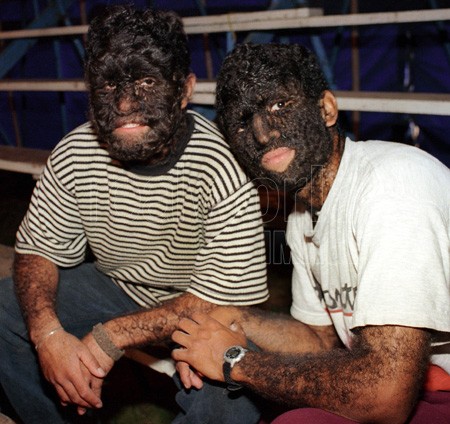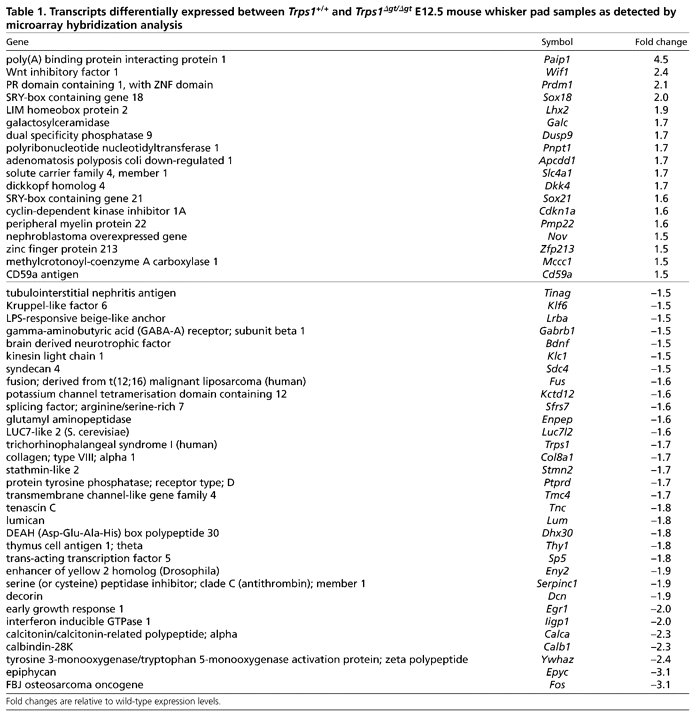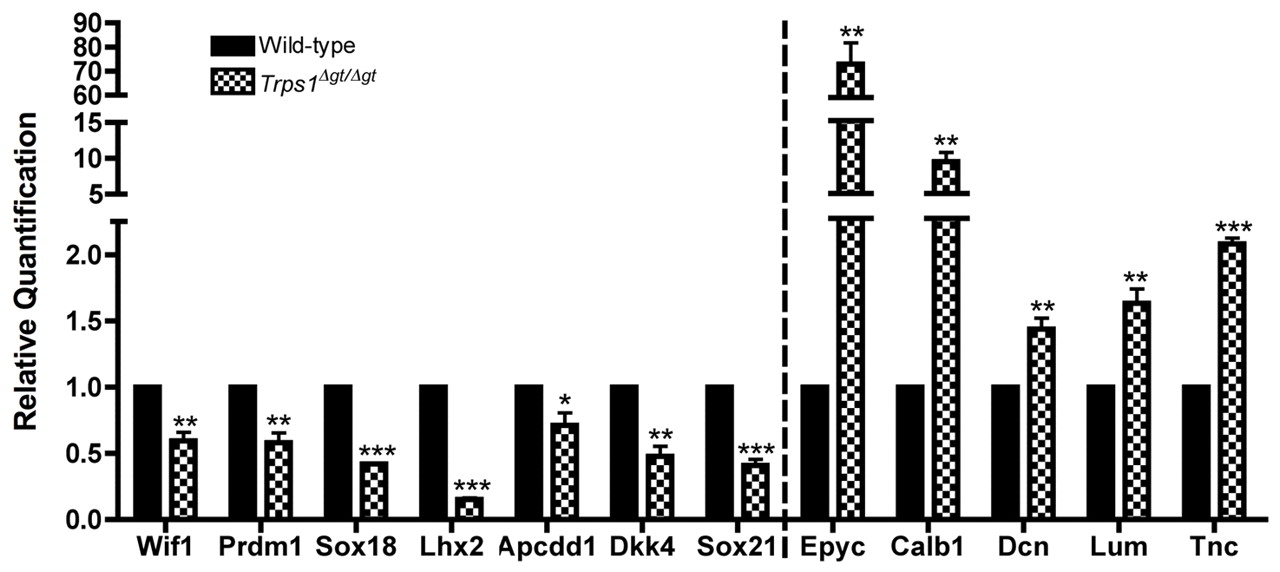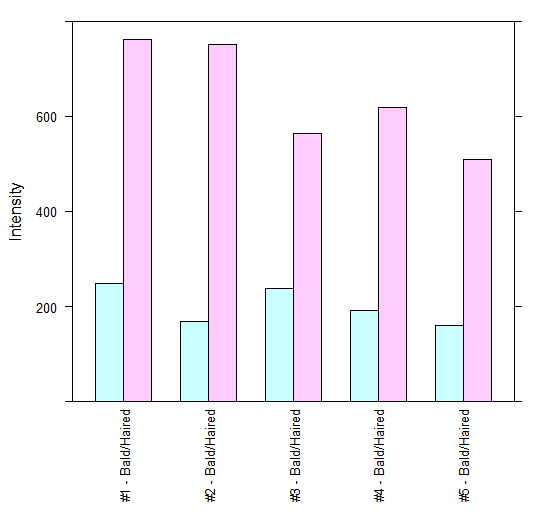It's that told me my dermato.It's a researcher not youAnti-androgens stop hairloss because they lower sebum? Right...
I have no idea why people engage with you and Armando. Sorry for defiling your thread IBTC
You are using an out of date browser. It may not display this or other websites correctly.
You should upgrade or use an alternative browser.
You should upgrade or use an alternative browser.
Big New Genome Wide Association Study On Androgenetic Alopecia - Preprint
- Thread starter InBeforeTheCure
- Start date
- Reaction score
- 636
Otherwise why the hormones that decreases sebum works as well and on all kinds of Androgenetic Alopecia.
Because they stop some pathway in the cells that cause damage. They also reduce sebum. But the sebum is downstream of the actual damage.
Aussi les hormones provoquent le sébum, mais le sebum n est pas la cause principale. La cause principale, c est la dommage a l ADN.
... Desolee mon francais mal.
- Reaction score
- 636
Btw. Can we just change the title to "The complete history of sebum -- plus three words" and open some other thread to talk about science?
- Reaction score
- 1,016
AGAIN, SEBUM is NOT THE PROBLEM of Androgenetic Alopecia. You really have to understand THAT.
make a poll
And "I don't want talk anymore about sebum", in this post
- Reaction score
- 1,016
Anti-androgens stop hairloss because they lower sebum? Right...
I have no idea why people engage with you and Armando. Sorry for defiling your thread IBTC
Thank you Dench,
Integrative Behavioral Couple Therapy (IBCT) is a relatively new approach to couple therapy that was developed by Andrew Christensen, a clinical psychologis....
are you refering it?
- Reaction score
- 950
Embrionic patterning, epigenetic differences on fibroblast, dont seem very strange to me, when we are talking boundaries areas of our body, Did you read in the cited article that these differences are also in pennis for example, not only in arms, or hands?....
I mean fibroblast as support of our physical body, but it is better the definition from wiki.
The main function of fibroblasts is to maintain the structural integrity of connective tissues by continuously secreting precursors of the extracellular matrix.
https://en.wikipedia.org/wiki/Fibroblast
Yes I know, but that's irrelevant. What matters is this -- there are embryonically-determined patterns of fibroblast gene expression along those axes, dermal papilla cells are derived from those fibroblasts, the "horseshoe pattern" is a sharply defined anatomical region, and A.G.A. is highly heritable. Given this, don't you agree that it is highly likely that the A.G.A. pattern arises through similar processes?
As you, I don't want talk anymore about sebum in this post.
Thank God.
Last edited:
- Reaction score
- 950
Anti-androgens stop hairloss because they lower sebum? Right...
I have no idea why people engage with you and Armando. Sorry for defiling your thread IBTC
It's obviously not you who's defiled the thread, but Armando with his one-track mind and Nadia with her Kindergarten-level analysis.
Yeah, engaging with them is probably useless -- it's like trying to convince a staunch creationist lol.
- Reaction score
- 636
Now this thread is high class. Thanks Armando.
The debate has been resolved, and the arguments were very convincing. The final conclusion was something like: "Shet up! f*** you, dirty pig!"
Yes, but in here its relaxingly empty.
- Reaction score
- 1,332
TRPS1 – DPC signature gene. Loss of function results in trichorhinophalangeal syndrome (TRPS), which includes hair loss. In one Japanese woman with TRPS, Stat3, Sox9, and beta-catenin were highly upregulated (Shibata et al., 2014). Another study (Christiano et al., 2012) showed that Trps1 inhibits Sox9 expression in mice. You could maybe put this in the Twist/Runx category, since Trps1 interacts with Runx2 and inhibits its activity (Lee et al., 2008).

TRPS1 and the Ambras syndrome;
Since the official naming of Ambras syndrome in 1993, several studies have implicated a site on the short arm of chromosome 8, where individuals had inverted or deleted genetic material.
The responsible gene, Trps1, is a zinc finger transcription factor that regulates a suite of genes involved in hair and bone development. One of the genes it regulates is Sox9, which in turn regulates stem and progenitor cells in the bulge region of the developing hair follicle.
In a 2004 paper, Dr. Christiano and colleagues described a “position effect” behind Ambras syndrome. That is, DNA elsewhere can alter the expression of Trps1, and that of the genes it controls. Their 2012 paper unravels the genetic controls behind the position effect.
Whole genome SNP arrays on a father and son with Ambras syndrome revealed a 1½-million-base-long duplicated stretch of DNA between Sox9 on chromosome 17 and the chromosome tip, like a repeated paragraph near the end of a book. And so the position effect is on one of the genes that Trps1 regulates.
- Reaction score
- 950
TRPS1 and the Ambras syndrome;
Definitely a paradox there -- loss of hair in TRPS, werewolf hair in AS. They do discuss this in that paper (which seems to be from 2008 and not 2004?):
Phenotypic differences also exist between AS and TRPS I patients. In addition to disparities in hair density and distribution, TRPS I patients exhibit skeletal abnormalities that are not characteristic of AS, including cone-shaped epiphyses at the phalanges, hip malformations and short stature (19–21). As the position effect described in this study likely disrupts a TRPS1 regulatory element(s), expression of the protein may only be affected in a subset of tissues at very distinct developmental timepoints, providing an explanation for why a bone phenotype like that found in TRPS I is not observed in all of the AS patients. Furthermore, mutations in TRPS1 found in families with TRPS I have previously been shown to encode proteins that dominantly antagonize the wild-type protein (14). In these cases, essentially no functional, wild-type protein remained. As we have demonstrated for AS, however, patient ME-1 still expresses TRPS1 transcripts, albeit at a very low level (2.65 ± 0.16% of wild-type levels).
There are therefore many possible explanations for the differences in hair phenotypes between patients with TRPS I and those with AS. One explanation is that TRPS1 is a transcription factor capable of acting as both a transcriptional repressor and/or activator, depending on the context and amount of protein present. A second possibility is that TRPS1 is capable of binding to numerous cofactors with various functions. Still a third possibility is that TRPS1 transcriptionally regulates both genes that activate and repress hair growth, to varying degrees. In the case of AS, where low levels of TRPS1 transcript are present, these balances of transcriptional regulation may be skewed, resulting in an excessive hair phenotype. Additional studies are necessary to define the precise function of TRPS1 in the context of hair follicle growth.
Besides Sox9, these are some of the other genes that Trps1 regulates in hair follicles (of mice), first by microarray:

And by RT-PCR:

Both are from this paper by Fantauzzo and Christiano, which I posted sometime before the shitstorm of the last few pages. Lhx2 (LIM Homeobox 2) is an interesting gene, which they show is a direct target gene of Trps1.
In adult skin, self-renewing, undifferentiated hair follicle stem cells (HF-SCs) reside within a specialized niche, where they spend prolonged times as a single layer of polarized, quiescent epithelial cells. When sufficient activating signals accumulate, HF-SCs become mobilized to fuel tissue regeneration and hair growth. Here, we show that architectural organization of the HF-SC niche by transcription factor LHX2 plays a critical role in HF-SC behavior. Using genome-wide chromatin and transcriptional profiling of HF-SCs in vivo, we show that LHX2 directly transactivates genes that orchestrate cytoskeletal dynamics and adhesion. Conditional ablation of LHX2 results in gross cellular disorganization and HF-SC polarization within the niche. LHX2 loss leads to a failure to maintain HF-SC quiescence and hair anchoring, as well as progressive transformation of the niche into a sebaceous gland. These findings suggest that niche organization underlies the requirement for LHX2 in hair follicle structure and function.
(Fuchs et al.)
They also show that loss of Lhx2 causes hair thinning due to merging of the club hair bulge with the new hair bulge during telogen and loss of the club hair. But in the Lhx2-cKO mice, probably because of altered ECM and cytoskeletal dynamics, the bulges merge into one and the immediate result is 50% sparser hair with loss of the club hair. Eventually these mice go bald. Lhx2 is also downregulated in bald scalp according to Cotsarelis' microarray data.

Blue is Lhx2 expression in bald scalp, pink/purple is haired occipital scalp, for each person in the dataset. I don't know though whether that's the result of lack of Lhx2 transcription or a loss of Lhx2-expressing cells.
Last edited:
- Reaction score
- 129
"LHX2 loss leads to a failure to maintain HF-SC quiescence and hair anchoring, as well as progressive transformation of the niche into a sebaceous gland."
So Olsen (2003) thinks that the hair follicle dies entirely. Cotsarelis showed us that the stem cells remain, but the progenitor were depleted and Fuchs et al think that over time the bulge becomes a sebaceous gland over time, which I suppose suggests that the stem cells dies and there's basically no coming back from that.
I still wonder whether there is a difference between balding areas which can be revived through medication and those that seem to be lost forever, and whether scientists just keep sampling from one and inferring to another. How come minoxidil brings back some hairs but not others? How come we only ever seem to get roughly 10% regrowth in clinical trials (Unless it's Follica, then the question is how come most hairs come back as vellus)? Perhaps the 'balding scalp' is not as homogeneous as we thought.
So Olsen (2003) thinks that the hair follicle dies entirely. Cotsarelis showed us that the stem cells remain, but the progenitor were depleted and Fuchs et al think that over time the bulge becomes a sebaceous gland over time, which I suppose suggests that the stem cells dies and there's basically no coming back from that.
I still wonder whether there is a difference between balding areas which can be revived through medication and those that seem to be lost forever, and whether scientists just keep sampling from one and inferring to another. How come minoxidil brings back some hairs but not others? How come we only ever seem to get roughly 10% regrowth in clinical trials (Unless it's Follica, then the question is how come most hairs come back as vellus)? Perhaps the 'balding scalp' is not as homogeneous as we thought.
- Reaction score
- 129
Normally a single follicle can produce multiple hair shafts out of multiple bulges, but in the Lhx2-cKO mice, probably because of altered ECM and cytoskeletal dynamics, the bulges merge into one and produce only a single hair from a follicular unit, and the result is sparser hair
Where did you read that a single follicle can produce multiple hair shafts from multiple bulges? All the models I've seen say that each follicle moves up and down a shaft with the bulge situated towards the top of the shaft.
- Reaction score
- 96
I was just talking about in a different thread how fewer hairs per follicle could be part of the thinning phenotype, and this explains that very clearly. It would be great if current hair stimulant treatments address this, but I have no idea. This is very rarely even documented, "hairs per follicle" that is.
- Reaction score
- 1,016
One disappears and another appears.
- Reaction score
- 1,016
Where did you read that a single follicle can produce multiple hair shafts from multiple bulges? All the models I've seen say that each follicle moves up and down a shaft with the bulge situated towards the top of the shaft.
Very interesting questions...one follicle = one bulge? or multiple follicle (Hair shaft) = multiple bulge?, or multiple follicle = one bulge?
Also, is there different sebaceous glands in a multiple hair follice pore?
- Reaction score
- 129
At this stage I think we need to make a sticky dedicated to the actual architecture of the hair follicle. We're all talking past one another, and so is the literature. I feel like the first month of research has been nothing but figuring out the difference between hair shafts, follicles, mesenchymal cells, dermal papillas.
One second the bugle is just a bunch of stem cells, the next it's made up of one type of stem cell and two types of progenitor cells, it's just a mess.
One second the bugle is just a bunch of stem cells, the next it's made up of one type of stem cell and two types of progenitor cells, it's just a mess.
- Reaction score
- 950
Actually, in regards to the Lhx2 cKO mice:
The old bulge is associated with the club hair, but in the next hair cycle of the mutant mice the club hair loses its anchoring and the new bulge merges with the bulge of the old club hair. The immediate result is 50% density compared to wild type mice.
The old bulge is associated with the club hair, but in the next hair cycle of the mutant mice the club hair loses its anchoring and the new bulge merges with the bulge of the old club hair. The immediate result is 50% density compared to wild type mice.
- Reaction score
- 129
Beowulf, why did Olsen think that hair follicles became sebacious glands? Could you link me to the article
I was quoting IBTC, so Fuchs et al think that the bulge can become a sebaceous gland. Swoop a few months ago mentioned that Olsen said that the Dermal papilla dies and that's it. (https://books.google.com.au/books?id=pHrX2-huQCoC&pg=PA185&lpg=PA185&dq=olsen+2003+hair&source=bl&ots=4xsJjsuJjD&sig=rLTF9h-kIja8vTP8QMoOKzMxw64&hair loss=en&sa=X&ved=0ahUKEwjWlbqt8cTQAhXBvI8KHXKlBB0Q6AEIMzAI#v=onepage&q=olsen 2003 hair&f=false)
